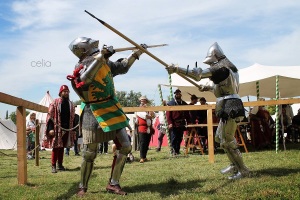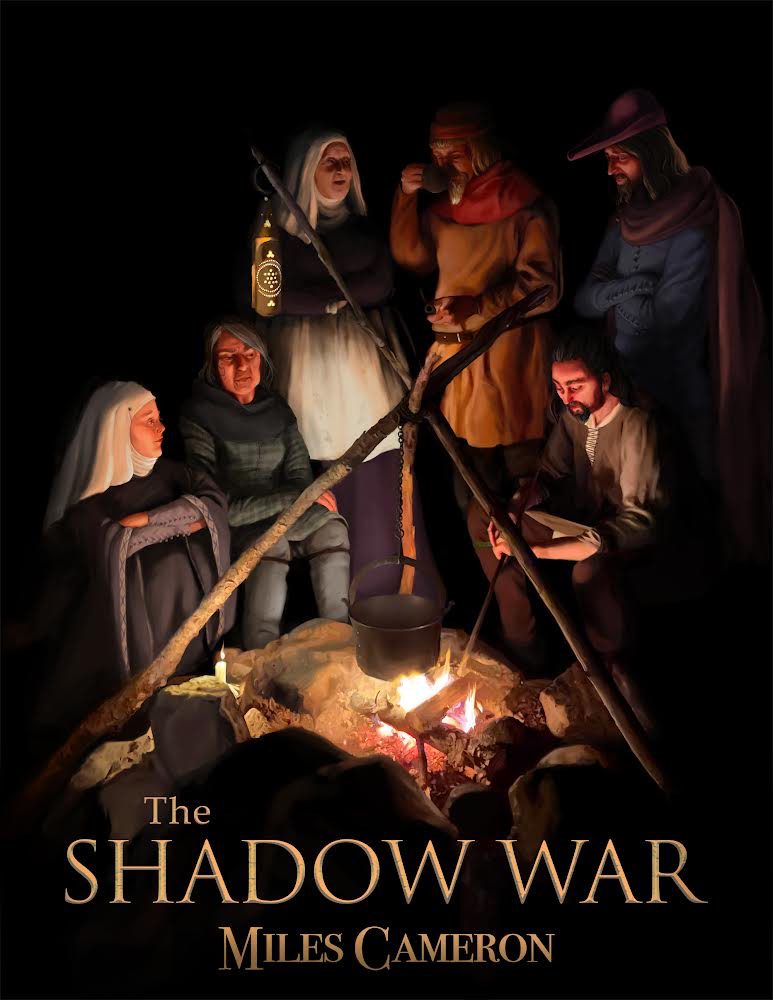Photo credit Celia Peachum (www.flickr.com/photos/celiapeachum/)
Six months ago I wrapped up the ‘Tournament’ portion of Tournament of Fools (or whatever my publishers will eventually call it.) I’ll try to avoid spoilers, but I thought that it might entertain readers to get an idea of the process. And, as the publishing date is coming in October 2015, I thought I’d re-blog about this to remind readers that Red Knight III is on the way.
Here’s the writing problem. In the Red Knight series, I am, deliberately, trying to use most of the standard tropes of Arthurian Romance (NB that’s a little different from the standard tropes of Arthurian fantasy, right… ok, pedantic mode off.) One I’ve wanted to play with from the first day of writing this was the wonderful adventure of the knight incognito riding into a tournament to save/rescue the princess or win the prize where no one knows who he is. Frankly, from the Morte D’Artur to Ivanhoe, I LOVE those scenes.
So where’s the problem?
Well… How–and I mean, how, exactly–does the brave knight get to the lists, incognito? Tournaments in the real world were complex affairs–and very dangerous. Kings and princes knew full well that getting several hundred dangerous men in armour together could lead to ill-feeling and violence. Tournaments were tightly controlled by the late-14th century, and since that’s the ‘feel’ of the Traitor son books, I wanted to stick to that. besides–it is a ‘Royal’ Tournament.
I’m including some pictures from the last Tournament I attended, the Torneo del Cigno Bianco in Verona, Italy.
Here’s a good recreated tournament (foot combat only) outside the walls of a beautiful 14th c. castle. So let’s note a couple of things right away–the crowds of people, and the tents and tent ropes. Tournaments were surrounded by tent ropes. Where else would all the noble knights live? In hotels?
Tournaments also have rules, and men who administer the rules–Marshals and Constables and Heralds. They don’t let just anyone fight. Some of that is about out-dated concepts of birth and nobility–but no one wanted to let an incompetent fighter into the lists, either–not then, and not now. So our knight incognito has two problems–a practical problem of getting through the welter of tent ropes and people, and a ‘game’ problem of getting past the bureaucracy of the tournament. Put another way, could you ‘sneak’ into the heavyweight finals and compete? Even at a relatively low-level MMA fight, there’s security and rules and people to watch the ring…
And then–let’s just ask–does our knight incognito really keep his helmet closed for several hours to avoid recognition? If he has a visor, he doesn’t ever raise it to, say, drink water? If he is wearing a great helm, he’d have to take it off… Listen, I wear armour all the time. The moment I’m not fighting, I want my visor open.

And just for fun–what about horses? And squires? And pages? No knight–at least, no knight risking his life in an all or nothing joust a l’outrance–wants to ride his destrier for a couple of hours to tire the horse before the moment of combat. So he needs to come on a riding horse, and change, just before he sneaks into the lists… no one will notice him and his entourage… few things sneakier than a mounted knight in armour…
My father–quite an historian himself–has just pointed out to me another problem of getting to the lists–the latrines, or privvies, or the loo…
When covered stands were built along the route of one of the processional performances, toilets for the gentry were built into the stands and easily accessible; the people who stood in the street had to shift for themselves. As Chaucer shows us, tournament theatres were very like dramatic ones, so I’d assume that toilets, at least for the privileged, were built in. Or perhaps there were rows of medieval porta-potties. I assume that the contestants had a special problem once they were in armor – getting through doorways, unfastening, squatting, etc.
You may laugh–but it is a real problem. Tents, privvies, horse lines and spares, armourers… thousands of people…
But… if it did happen, how could it have been done?
I’m not telling today. But I enjoyed writing the scene, the details, the planning, all so one character could face another in a climactic fight. And I thought I’d blog about the ‘how.’ This is where my reading of books on this sort of stuff — like Barber, Richard and Barker, Juliet, Tournaments: Jousts, Chivalry and Pageants in the Middle Ages, Boydell (1989) Kaeuper, Richard, The Book of Chivalry of Geoffroi De Charny: Text, Context, and Translation, University of Pennsylvania Press (1996) De Pisan, Christine, The Book of Deeds of Arms and of Chivalry, Penn State University (1999) Lull, Raymond, Book of Knighthood and Chivalry (late 13th c), published by Chivalry Bookshelf (2001) Chivalry and Violence in Medieval Europe (Dick Kaeuper again, because he’s my favorite) (Oxford University Press 2001) and perhaps most important, Maurice Keen’s seminal work, Chivalry (Yale University Press 2005) — was that too many titles? anyway, this is where all the reading links up with all the reenacting, and together, we can explore the details of the how and why of a great tournament–and give the characters some tools to accomplish the author’s mission. Well, and their own.
I confess that in the end, Gabriel and Bad Tom and Amicia–and the Queen and Blanche–ran off with this scene, and not everything went as i expected.
But that’s why it’s fun to write!



Porta-potties or toilets? Afraid not. Try chamber pots – the servants bring the toilet to you, the priviledged don’t need to go out for bodily functions.
Apparently there’s a source on the loo being built right into the noble part of the stands…
In the stands, makes sense. In a tent – chamber pot. Trust me, I know. I had to avoid these things all over my grandmother’s house before she got a bathroom in 1975.
The Knight incognito could conspire with an accomplice who rides in under a false banner. Incognito could arrive in disguise, a Trojan Horse, or hollow haystack. With a contrived distraction, slight of hand, the two could exchange places. The swap of key or identical armor/weapons and such could be arranged as part of the deception. Just brainstorming but look forward to seeing how you solved the dilemma. Cheers.